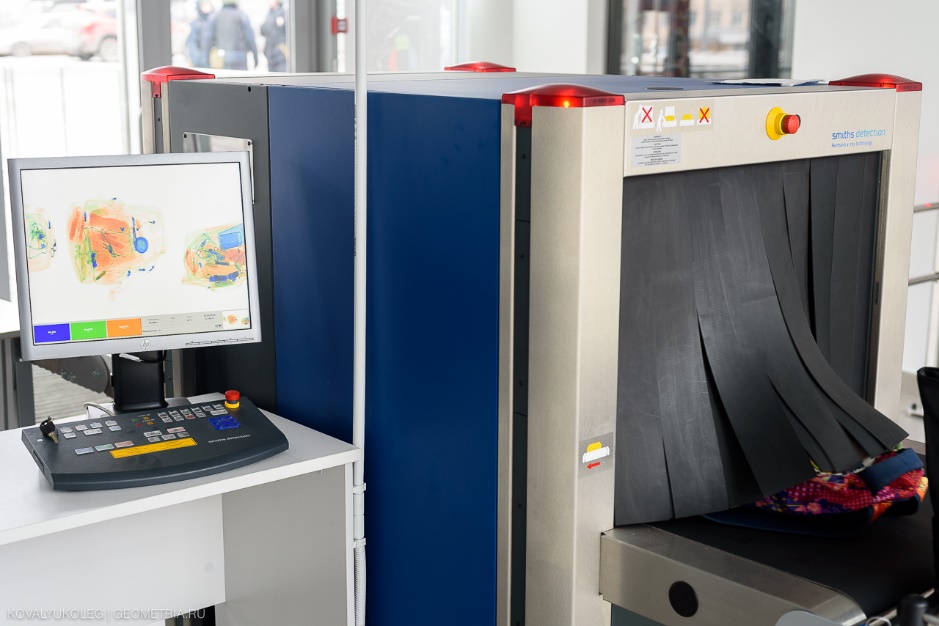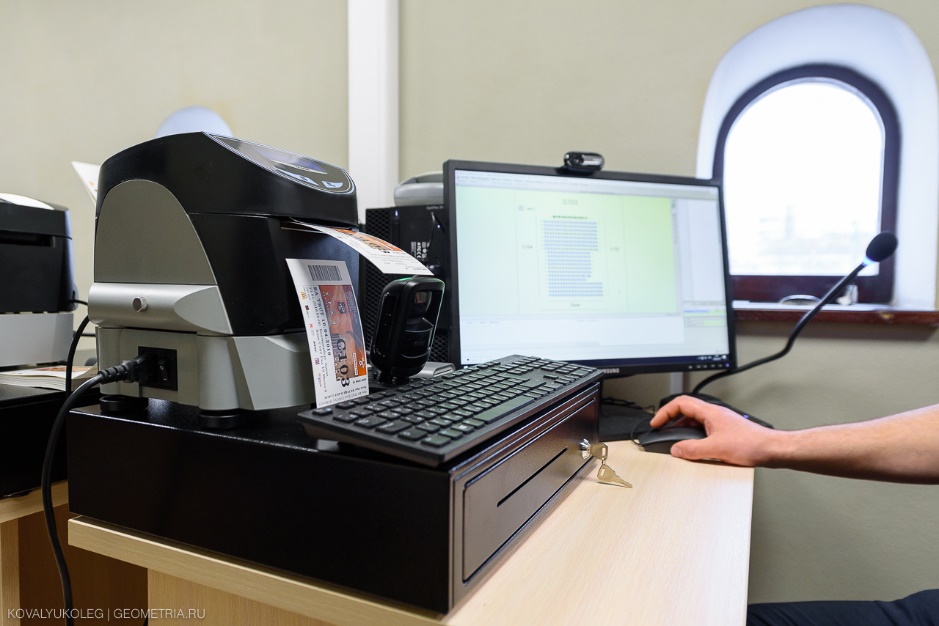Security "Ekaterinburg Arena": how we prepared the stadium for the 2018 World Cup

Every year, the Department of Intelligent Buildings gets more and more interesting objects. We started quite banally - with SCS in offices more than 20 years ago. Then came smart buildings, energy centers, data centers, autonomous installations far beyond the borders of cities, industrial facilities - and now there are several stadiums.
In total, at the Yekaterinburg Arena stadium, we implemented 22 engineering subsystems from security with a system for identifying sabotage and terrorist funds to high-density Wi-Fi, a television and radio broadcasting system and multimedia screens.
Today I will talk about security, and a little later in another post, my colleague from the telecommunications department will talk about hells cable and audio-visual systems.
Security
There is a ticketing system that is integrated into the general FIFA-2018 ticket system. Come with a fan passport, and now he is with an RFID tag. At the entrance to the stadium, you apply it, and the steward displays a photograph of the person corresponding to the tag code, he visually checks whether the person came. A camera is installed next to it, which allows for automatic reconciliation and face recognition, but a separate letter from the Ministry of Internal Affairs does not require identification for the duration of the championship - it works like a video surveillance system.

Entry group. Full height turnstiles
Ministry of Internal Affairs Order No. 1092 for sports facilities already imposes requirements for each turnstile to have a face recognition system. The fan is compared with the fan base (that he is he, and not some left person with his subscription, and whether he is on the club’s black list), as well as with the Ministry of Internal Affairs base (he is suddenly wanted).

Inspection Pavilion

Introscopes

Radioactive Detection Sensor
The second identification is already by ticket: you find yourself in the inspection pavilion (metal detectors, introscopes, radiation control). In case of pollution, it squeals incredibly. Near the dogs, they sniff out in the crowd as a whole. For spot checks, there is special equipment such as a vacuum cleaner in appearance - sniffers for explosives. If someone worked with plastid, he took the phone, and brought the phone to the stadium - the sniffer will detect it. If this device showed the presence of traces of explosives, then the chemical analysis in the express laboratory in the pavilion is next.
Preventing possible issues, the sniffer is tuned only to a number of compounds characteristic of explosives. Alcohol and other compounds that change consciousness do not register.
But for all kinds of dangerous liquids like gasoline and incendiary mixtures, too, has its own device. He recognizes such substances without violating the tightness of blood vessels.

Half-height turnstiles. Passage to the sector
From the buffer zone, passage to the "green" is also by tickets - it is only possible in your sector.
If the flows of fans mix, they can start to fight. The fan of the winning team, accidentally flocking to a crowd of fans of opponents at the exit, is a rare application for the Darwin Prize. But this also happened. Therefore, the division into sectors is done inside the stadium. With your ticket you can only go to your fans. Thanks to this, there have been fewer and fewer incidents lately.
The buffer zone is divided firmly only if dangerous teams such as the match “Spartak” - “Zenith”. During local matches, for example, it is relatively open, you can freely walk on it. There were no restrictions on FIFA either; everything is there for tolerance.

A single stadium control center
A fan accounting system counts people, registers a parish. FIFA exit portals make sure everyone leaves. The announcer of the match reports the occupancy of the stands on the ticketing system.
At the opening match of the Yekaterinburg Arena stadium, 26,868 fans were recorded.
Accredited people are considered separately (they do not pass by the passport, but by accreditation) - these are the media and service personnel.
We also equipped contact points for special services, but I can’t talk about them.
Box office
The stadium has preserved the historical facade since the days of the USSR. The historical ticket offices have also been preserved, there are very distinctive pavilions. All this heritage is protected by the Ministry of Culture. At the request of the club, we installed terminals for ticket and season tickets at the box office to make them work. There is even one live cashier who serves them. On match days, not one.

There are also terminals (separate ones) around the stadium perimeter for buying and printing tickets. They are already for self-service. The terminals are integrated with the ticketing system.

Self-service terminal
But the whole story is, of course, for the heritage regime. FIFA has its own system there, and the purchase is only through the site.

Structural monitoring and emergency response
As part of the increased safety at the stadium, a system for monitoring engineering structures is provided - there are tiltometers, piezoelectric sensors, and so on. They track offsets from specified limits. The structure is lively, breathes: it expands thermally and contracts, deforms under gusts of wind - there is a weather station on the roof, which transmits wind and weather parameters to correct sensor readings. The entire arch of the stadium is mounted on 8 pylons - near them, sensors record displacements. All these data are transmitted to the situation center of the stadium, to the situation center of the Ministry of Emergencies.
Sensor Example:
Three-component accelerometer for studying seismic signals, monitoring industrial vibrations, microseismic studies of building structures, type R-sensors MTSS-1043A, measuring range ± 0.8 g, sensitivity 6 V / g, non-diff. output, frequency band 0.1–120 Hz, dynamic range 130 dB, Ethernet interface, temperature range –30 ... + 55 ° C, power supply 220 V 50 Hz.
There are string strain gauges in IP54-design and laser total stations with reflectors for deformation marks. Multiplexers and dataloggers are used to collect data.

Total Station
There is monitoring of engineering systems (this is not scheduling and local automation, but the upper level of collecting information from engineering networks and security systems for transmission to the Ministry of Emergencies and the "Safe City").
For the operational work of the Ministry of Emergency Situations and the police throughout the stadium, red phones are located on the evacuation routes - SUKS (crisis management system). In other words, Spitz are physical landline phones with a separate PBX with increased survivability. They are connected to the intercom using a special non-combustible armored cable. Imagine differential algebra in composite armor made of diamonds and the look of Chuck Norris - this cable is so invulnerable. Fire resistance - not less than 180 minutes, of the features of the shell - the absence of halogen gases and low smoke emission during combustion. In general, everything is in accordance with GOSTs.

SUKS
Subsystems of new pavilions
Since the stadium was originally designed for 23 thousand people, we had to set up temporary stands - we need at least 35 thousand for the championship. Because of this, the base pavilions are no longer enough to fill the stadium within an hour, as required by FIFA standards. To comply with the standards, temporary pavilions with the entire infrastructure were erected - an additional 2 pavilions for 11 thousand bandwidth. The whole engineer is there: fire, warning, its own UPS, water, heat, electricity, heating.

Temporary Pavilion
Separate inspection system for VIP-zones, transport checkpoints with barriers, hedgehogs, bollards and radiation monitoring. The same search, everything is relatively standard.

Transport checkpoint

Implementation: ticket system (payment system, cash desks, access control system, information display system, central server part). Monitoring and control system for engineering systems of buildings and structures: physical security system, fire safety system, electrical systems, mechanical systems, system for monitoring the deformation state of load-bearing structures, control system in crisis situations. There are also communication and data transmission systems of the Ministry of Internal Affairs, the Federal Security Service, the Federal Security Service, technological solutions and measures aimed at countering terrorist acts, temporary inspection pavilions with basic engineering systems. TV and radio broadcasting system: subsystem for connecting audio and video equipment in the field, stands and in the press center, subsystem for connecting PTS (mobile television station),
I have everything, the next report will be my colleague from the telecommunications department.
